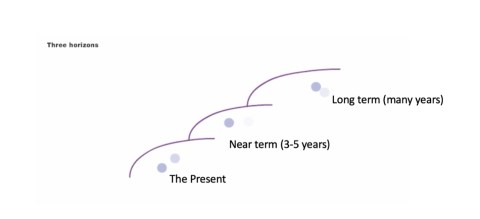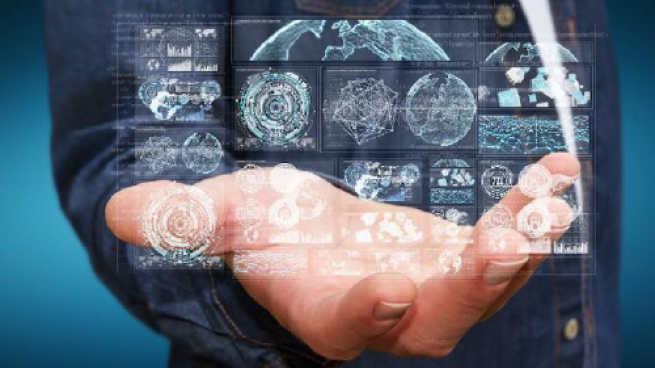Why Retailers Today Should Prepare for the Metaverse Tomorrow
As a retail technology executive, I’ve learned that few buzzwords have the power to roll eyes like cryptocurrency and the metaverse. For many, they are linguistic signposts on a far horizon representing large swaths of innovation that need not concern them for now. Not today, not this year, maybe not even in five years. That wish might provide some retailers with a sense of comfort. But what they might need to accept is that these disruptions are already in motion. They are largely driven by opportunities defined by technology platforms, brands, and, yes — as is always true — long-term consumer behavior trends.
Platforms
I was at the Retail Technology Show in London last month, and the groundswell of interest in the metaverse created a physical, palpable sense that something new, exciting, was afoot. It might have been the time of year — Spring — or the time in history — the palpable beginning of a post-pandemic world. In a word, the collective emotion in the air was “hope.” In an event setting, hope translates into opportunity. No one sees that opportunity more than the big tech companies (Facebook, Google, Microsoft) and retailers that are in fact big tech companies (e.g., Amazon). The reason: as with the rise of e-commerce (Web 1.0) and the social Web (Web 2.0), technology providers saw the opportunity to provide all the smart plumbing for retail innovation. With the metaverse (sometimes referred to as Web 3.0), a new level of immersion and interaction will reshape the way consumers work, buy, and socialize. When the first wave of digital innovation washed over Silicon Valley, a constant refrain was disintermediation. A vendor— let’s say a book seller — could find clientele online, a real-life phenomenon that wiped out bookstores, then later record stores, then later all manner and form of large-scale and human-scale brick and mortar.
Manufacturers
And as with Web 2.0, CPGs and other manufacturers were quick to understand the opportunity to disintermediate the store and engage more directly with the customer. As Forbes noted in a recent piece “luxury brands like Burberry, Dolce & Gabbana, Hermes, and Gucci are using NFTs to generate interest.”
A quick primer. According to Investopedia, “Non-fungible tokens (NFTs) are cryptographic assets on a blockchain with unique identification codes and metadata that distinguish them from each other. Unlike cryptocurrencies, they cannot be traded or exchanged at equivalency.” Or as The New York Times explained in “What are NFTs?”:
You could think of NFTs as like the certificate of authenticity you might get if you bought an expensive sculpture. The sculpture could be copied or forged — or someone could break into your house and steal it — but because you have the certificate of authenticity, you can prove that you are the owner of the original.
At Decentralized Metaverse Fashion Week in March, Tommy Hilfiger, DKNY, Estée Lauder, Karl Lagerfeld, and Alexander McQueen unveiled what they were doing. It recalls early efforts of metaverse-focused experiences like Second Life, which attracted some interest from CPGs (like P&G) but little traction with mainstream consumers. Another hot sector in metaverse retail is gaming, which — although not “mainstream’ — represents a huge and inevitably influential demographic as gamers get older and gain more purchasing power.
And in May, CNN reported on Kraft Heinz’s deal with Microsoft to “to help secure its supply chain by, among other things, using automation to speed up operations and replicate the company's facilities online. Kraft created "digital twins" in the metaverse that allow the company to problem-solve virtually. The tactics should help Kraft get its products to grocers more quickly and ensure that factories are running as efficiently as possible.”
In the end, it’s all about the data.
People
Which brings us back to the shopper. Perhaps the most durable of all retail business principles is to put the shopper first in all decision making. With the economic clout that both tech platforms and manufacturers have to wrest further control away from the retailer and have greater engagement with the shopper, retailers will have to search deeper into their true assets: data and customer demand science. With omnichannel, retailers of all sizes are beginning to reap the benefits of knowing the online and offline habits of their customers. Get that? A retailer with a mostly regional reach does not necessarily need to design a “lab” to understand shopper behavior. What is happening in the roughly one million stores in the U.S. alone is the ultimate customer experience lab.
But a question emerges. What can retailers do in the interim? Not an easy question, for which there is no easy answer. What I will say is that it’s the type of question that has always concerned the world’s largest enterprises challenged to respond to a game-changing technology or events (economic disruptions, public-health crises, etc.).
Two old-school principles from the rarified world of strategy consulting come to mind. The first, documented by Walter Kiechel in his excellent book, The Lords of Strategy, is the “Experience Curve,” which was developed by the Boston Consulting Group. A framework for evaluating whether a business should enter a market or leave it for others, the Experience Curve asked businesses to ask themselves, “what business do I want to continue to be in, and what is my advantage?” The answer could unlock immense value in the face of a modern trend. Howard Schulz, the newly returned CEO at Starbucks has often said he “was not in the coffee business serving people, but in the people, business serving coffee.” It worked brilliantly for quite some time, and now Schulz is back at the helm to face fresh challenges. For retailers who are becoming aware of both the threat and opportunity that Web 3.0 represents, it would be a good time to pause and take stock.

And this is where the second old-school principle of “Horizon” comes in, first introduced by McKinsey in the 1960s to help businesses understand how to manage change over three-time horizons: the present, several years out, further in the long term. The model — which in one way or another has been used thousands of times in both business and non-profit environments — posits that you can work on the future today. A first horizon for retailers looking at the metaverse could look at the value proposition that they have during the early land grab for value creation. A corollary action would be to invest in the accessibility and shareability of the retailer’s special assets, including customer data. Who knows where the average grocery retailer might be in the real (or virtual!) world 10 years from now? But if retailers act today, they will be better assured they have a prime position in the market.




